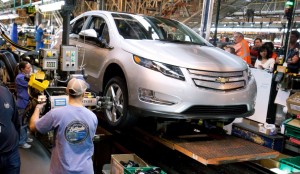
IHS Automotive predicts automakers and suppliers around the world will continue seeing growth for several years.
The expansion of the global automotive industry is expected to continue in the near term and automakers and their suppliers should be able exploit that growth using flexible vehicle platforms, according to a new study by IHS Automotive.
At the same time, manufacturers and their suppliers also are working to implement more complex vehicle and process technology for advanced safety, lighter weight materials, emissions reduction and fuel economy targets in tandem with a global convergence of emissions standards that will raise the efficiency of global platforms.
The strong recovery of the industry brings a new energy to the global market, said Michael Robinet, managing director, IHS Automotive.
IHS Automotive forecasts new light vehicle production in 2014 is on track to reach 17 million units in North America, and 87.7 million units globally. By 2021, production is expected to reach 106.3 million globally and 18.5 million in North America, respectively.
Robinet said the North American market is returning to stability, with record sales by most automakers. “It’s an exciting time again for the automotive industry – in North America and globally,” Robinet said. IHS Automotive expects 21 new program launches in 2015, scaling to a near-record 37 in 2018, based on current plans.
From a skills and capacity perspective suppliers are now preparing, but may see some challenges, he added.
The speed of change also requires suppliers – as they plan for the road ahead – to be nimble, adaptive to change and strategic about facility locations, transportation methods and costs. Technology implementation decisions are also taking place based on legislative agendas driving decisions, and suppliers determining which OEMs to engage with while keeping pace with fast-changing technology developments.
The largest manufacturers are deploying strategies to expand their business – both geographically and within their portfolio by using global platforms and multiple body styles, according to Robinet.
Manufacturers are no longer launching vehicles by region; they’re often launching the same vehicle at several facilities around the world – within a tightening timeframe. In addition, the integration of global platforms into North America, China and South America increases the cycle velocity.
Through 2025, OEMs and suppliers alike – at all levels of the supply chain – will be working to align global platforms with global capacity, manufacturing and technology implementation and manage new logistics challenges efficiently to match the needs of the industry.
An interesting development since 2000 is the influx of automotive production and capacity in the Midwest and southeast U.S., as well as Mexico – which creates some challenges for suppliers and their logistics processes.
(New Charger getting Hellcat treatment. For more, Click Here.)
Some manufacturers have recently expanded or announced plans for new facilities in the southeast, as well as Mexico, prompting suppliers to re-think their strategy and identify opportunities to keep costs in check and supply disruptions to a minimum.
(Click Here for details on the federal judge urging settlements with GM.)
“Our analysis indicates that the center of North American automotive manufacturing has shifted about 14 miles to the south each year since 2000, and we expect that to continue through 2026,” Robinet said.
The geographical shift creates significant opportunities for suppliers to address the challenges laid out for logistics and manufacturing, given various manufacturers’ preference and requirements to locate within a few hours’ driving distance from their final assembly facilities.
(To see more about Chrysler’s new office of compliance, Click Here.)
Suppliers and OEMs are evaluating their logistics channels to help address the shift, at the same time they are working to maintain an uptick in production levels across most platforms.
”A swiftly changing industry, combined with a need for reduced logistics costs, is also driving the establishment of new and expanded supplier production facilities in strategic locations,” Robinet said.
